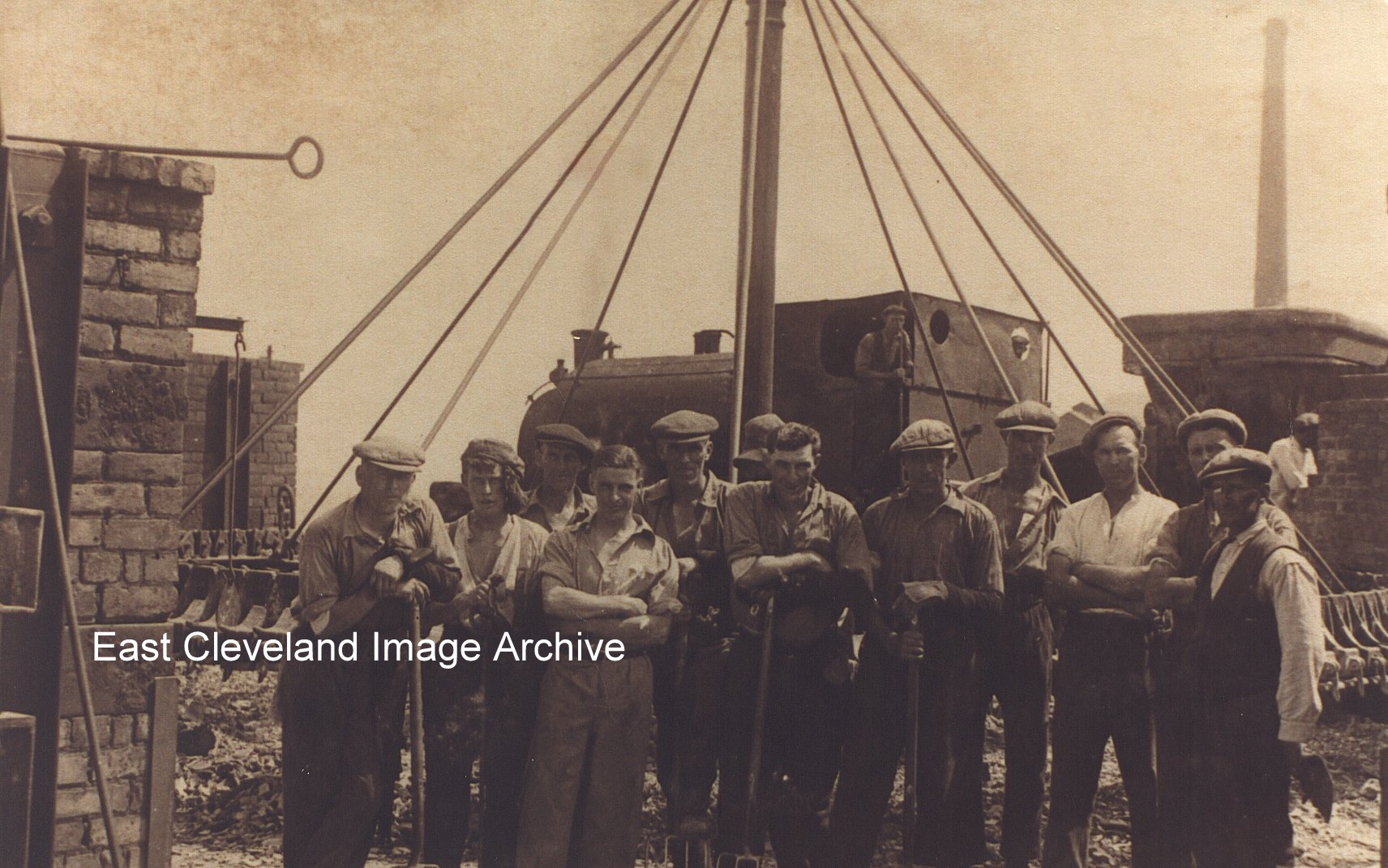
Taken in 1933 this shows the brick wheel and the work force on the steel works. Robert Proctor told the Archive: “The purpose was to make bricks from molten blast furnace slag , many of these bricks can be found in most back alleys, they are grey with siliceous blue bands running through. It consisted of a number of moulds arranged on the outside of a wheel supported from the top by tie rods , which looked like spokes. These moulds had to be filled from a slag ladle and once set were released from the mould by dropping a door , the bricks were then put into an oven to cool down slowly so as to avoid any fractures, a type of heat treatment.” Eric Johnson supplied the following brief description of brickmaking: ”The slag was brought from the furnaces in slag ladles adapted with a tap hole. a chute was placed between this and led down to the wheel moulds. The making of slag bricks was a very labour intensive operation; once started was continuous hard, hot work. The wheel was a steel circular construction, with the steel moulds round the perimeter with a hinged bottom held with a catch. This can be all be seen in the photograph, the wheel was driven by a geared electric motor with hand operated backup. As the slag ran down the chute into the moulds, the wheel rotated, the filled moulds cooled down and at a point near the kilns, the catch was struck the hinged bottom opened the hot brick fell to the ground. It was picked up with the large “gripes”. some of the men can be seen holding in photo, carried to the kilns and stacked inside, when full the kiln was closed. as the kiln was already hot from the previous batch the working conditions for the men can be imagined.”
Second man front right is Harry Dack from Carlin How; does anyone know any more of the men here?
Image courtesy of Derick Pearson and others; thanks to Robert Proctor and Eric Johnson for the updates.
Are these known as Scoria Blocks?